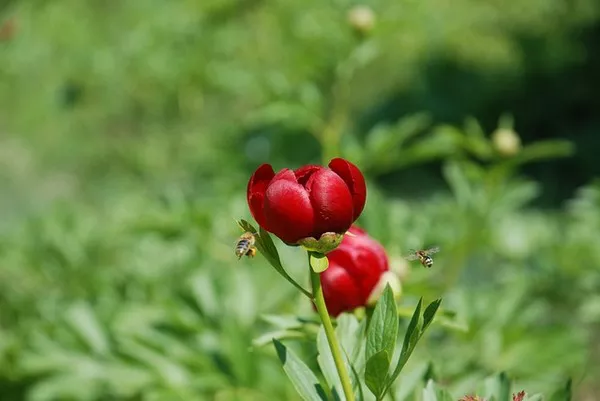Gardens are a source of joy and beauty, attracting various forms of life, including the essential pollinators like bees. While bees play a crucial role in pollination and maintaining ecological balance, there may be instances where individuals desire a garden that minimizes bee attraction. This could be due to allergies, safety concerns, or simply personal preference. In this article, we explore the world of flowers that don’t attract bees, providing insights into plant selection and maintenance while still fostering a vibrant and aesthetically pleasing garden.
Understanding Bee Attraction:
Before delving into specific flowers that don’t attract bees, it’s essential to understand what draws these pollinators to certain plants. Bees are primarily attracted to flowers with bright colors, especially shades of blue, purple, and yellow. Additionally, they are drawn to flowers with a sweet fragrance, as scent plays a significant role in locating nectar-rich sources.
Selecting Flowers that Minimize Bee Attraction:
1. White and Pastel-Colored Flowers:
Opting for flowers in shades of white and pastels can reduce bee attraction. While not entirely bee-proof, these colors are less appealing to bees than their brighter counterparts. Examples of such flowers include white roses, pastel-colored dahlias, and pale lavender.
2. Foliage Plants:
Plants that primarily feature lush foliage rather than showy flowers can be a great choice for those looking to minimize bee presence. Hostas, ferns, and ornamental grasses are examples of foliage-centric plants that add greenery without being a significant attraction for bees.
3. Unscented Varieties:
Many flowers emit fragrances that entice bees. Choosing unscented varieties can be an effective strategy. For instance, marigolds, zinnias, and impatiens are vibrant flowers that are less likely to attract bees due to their minimal fragrance.
4. Double-Petaled Flowers:
Double-petaled flowers, with their densely packed petals, often produce less nectar and are therefore less attractive to bees. Double-petaled roses, dahlias, and peonies are beautiful options that may help in maintaining a bee-friendly balance.
5. Herbs:
Incorporating herbs into your garden not only adds flavor to your kitchen but can also be an excellent choice for minimizing bee attraction. Basil, mint, and cilantro are examples of herbs that are less likely to attract bees while providing various culinary benefits.
6. Native Plants:
Selecting native plants can contribute to a garden that is less appealing to bees. Native species have evolved alongside local pollinators, and their characteristics may not be as attractive to bees as non-native alternatives. Research and choose native plants that suit your region and preferences.
7. Spring-Blooming Bulbs:
Certain bulbs that bloom in early spring, such as daffodils and tulips, can add color to your garden without attracting bees in large numbers. These flowers are often visited by bees less frequently than those that bloom later in the season.
Maintaining a Low-Bee Garden:
Regular Pruning: Pruning your flowers can help control their size and shape, limiting the amount of space available for bees to gather nectar. Regular deadheading, or the removal of spent blooms, can also prevent the production of additional nectar, making the plants less attractive to bees.
Proper Watering: Bees are attracted to plants that are well-hydrated and producing ample nectar. By avoiding overwatering and ensuring proper drainage, you can create an environment that is less conducive to bee activity.
Strategic Placement: Consider the placement of bee-attracting and bee-minimizing plants in your garden. By segregating them or placing bee-friendly plants toward the periphery, you can create zones that cater to both aesthetics and personal preferences.
See Also How To Get Free Flowers On Your Birthday
Conclusion:
In cultivating a garden that minimizes bee attraction, it’s important to strike a balance between personal preferences and environmental considerations. While bees are essential pollinators, there are various strategies to design a garden that caters to individual needs without completely excluding these vital insects. Selecting flowers based on color, scent, and structure, along with proper maintenance practices, can help create a beautiful garden that aligns with your vision while respecting the role of bees in our ecosystem.


